
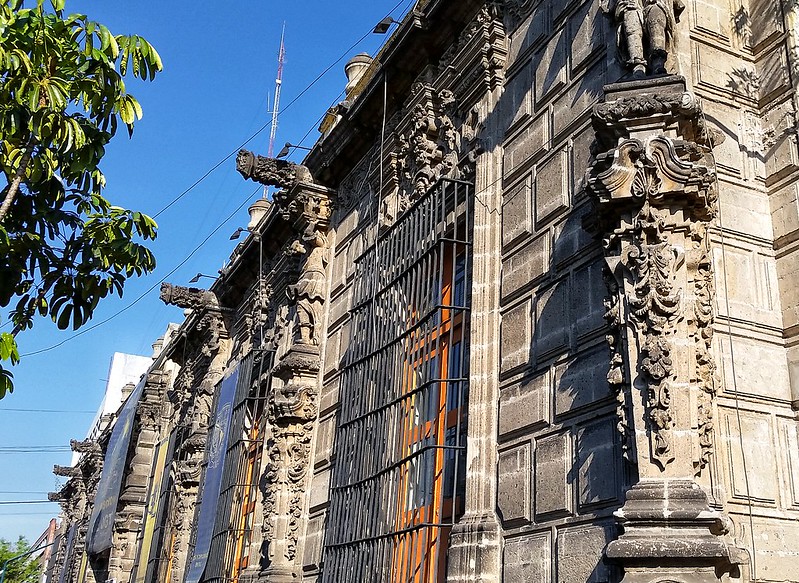
The Casa de los Mascarones is today a language school run by the National Autonomous University (UNAM). It’s one of the most striking examples of 18th century architecture outside the San Cosme Metro station, and a good example of the Baroque Residential Palaces for which Mexico City is justly famous.
The name, which might be translated as “House of the Masks,” is more properly read as referring to the particular grotesque of the building’s exterior. Inside, you’ll see, it’s as lovely as any open court-yard palace from the same period.
Like the church on the other side of the avenue, that of Saints Cosmas and Damian, the story of the Casa de los Mascarones begins with the distribution of land on either side of the old Tenochtitlan-Tacuba causeway. To improve security on the road, the Spanish distributed lots for orchards and farmland on either side. Thus the land remained for nearly 200 years.
Between 1766 and 1771, work began on a country estate for José Diego Hurtado de Mendoza, Peredo and Vivero, the Count of the Orizaba Valley. But in truth, title for the land is recorded as early as 1562.
In fact, the work was likely unfinished and never inhabited until after the country’s independence from Spain. It was auctioned, in an unfinished state, in 1822.
Thereafter, the property was occupied by numerous educational and scientific institutions. By 1906, it was in the possession of the Scientific Institute of Mexico, and in 1914, President Venustiano Carranza took over the property in the name of the Republic.
Already by the mid-1920s it was part of the UNAM and put to multiple uses on the university’s behalf. Declared a historical monument in 1959, much of the building, apart from its very prominent facade, was neglected or otherwise damaged by the passage of time.
The Casa de los Mascarones is said to be replete with mystery. The building’s own darkness is thought to protect the interior. While making it that much more interesting, the place is also thought to be the site of strange noises, perhaps some apparitions. At least some old vibrations from the Tenochtitlan-Tacuba causeway, or from any of the intervening years, must surely survive, if not in the stones themselves, then surely in the surrounding streets, shadows, and alleyways.
 corgralcele@cele.unam.mx
corgralcele@cele.unam.mx
 +52 (55) 5535 5203
+52 (55) 5535 5203
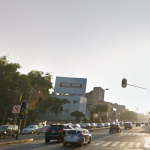
Nearest at 0.13 kms.

Nearest at 0.15 kms.
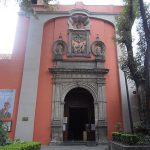
Nearest at 0.23 kms.
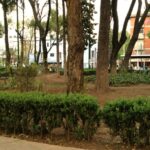
A neighborhood favorite just in from the old causeway landing.
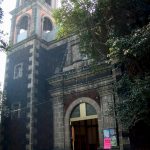
A Tacuba neighborhood church in Azcapotzalco...
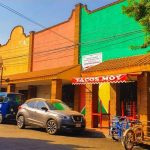
A giant neighborhood market in the old west of Tacuba...
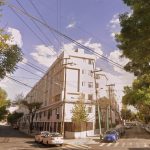
An age-old neighborhood of ancient Tacuba, today home to an enormous park...
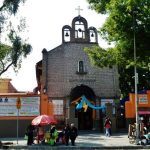
A church next to Mexico City's most famous tree...